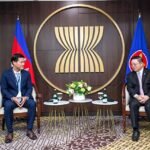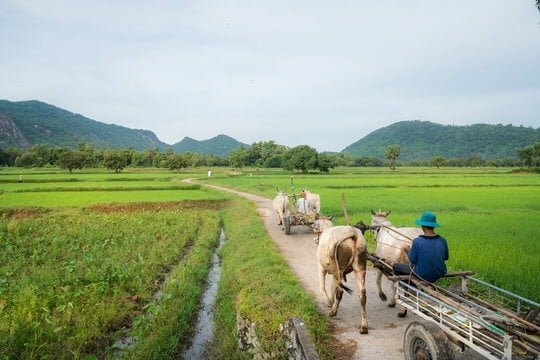Governments worldwide face increasing pressure to improve efficiency and reduce waste. Traditionally seen as the epitome of bureaucracy, government operations often struggle with inefficiencies, red tape, and prolonged processing times. However, the application of Lean principles—an approach widely successful in manufacturing and service industries—holds promise for transforming government operations. This article explores how Lean strategies can be effectively implemented in the public sector, drawing on practical examples and highlighting the role of True North Lean in facilitating this transformation.
The Challenge of Bureaucracy
Governments are complex organizations characterized by a multitude of processes and functions that span various departments and agencies. This complexity often leads to inefficiencies, with overlapping responsibilities, redundant processes, and a general lack of synchronization. Citizens frequently experience these inefficiencies as long wait times, cumbersome procedures, and inconsistent service delivery.
The traditional government setup tends to focus on functional silos, where specific tasks are grouped together without considering the overall process flow. This setup creates internal “post office” systems, where work items are transferred from one department to another, adding unnecessary transportation and waiting times. These inefficiencies not only waste valuable resources but also erode public trust in government institutions.
Lean Principles in Government
Lean principles, initially developed in the manufacturing sector, aim to create more value with fewer resources by eliminating waste and improving process efficiency. The core Lean principles—value, value stream, flow, pull, and perfection—can be adapted to address the unique challenges of government operations.
Value and Value Stream Mapping: Identifying what constitutes value from the citizen’s perspective is the first step. In government, value is often linked to timely and accurate service delivery. Value stream mapping helps visualize the entire process, from the initial request to the final delivery, highlighting non-value-adding steps and areas of waste. This visibility allows government officials to identify and eliminate bottlenecks and streamline workflows.
Creating Flow and Pull Systems: Lean aims to create a smooth flow of work, where processes are connected and work items move continuously without delays. In government, implementing flow systems involves reorganizing work around end-to-end processes rather than functional departments. Pull systems, where work is initiated based on actual demand rather than forecasts, help in managing resources more efficiently and reducing work-in-process inventory.
Standardized Work and Load Leveling: Standardizing processes ensures consistency and reduces variability. In government, standardized work practices can lead to more predictable and reliable service delivery. Load leveling, or balancing the workload across available resources, prevents overburdening certain departments and ensures that work is evenly distributed.
Continuous Improvement: Lean is grounded in the concept of continuous improvement, where processes are regularly reviewed and refined based on feedback and performance data. Government agencies can foster a culture of continuous improvement by encouraging employees to identify inefficiencies and suggest improvements.
Case Study: Implementing Lean in a Government Permit Office
To illustrate the potential of Lean in government, consider the example of a government permit office. Traditionally, applying for a permit involves multiple steps, each handled by different departments. The process is often slow and riddled with delays due to batching work, multitasking, and a lack of synchronization.
By applying Lean principles, the permit office can be transformed as follows:
- Value Stream Mapping: The first step involves mapping the entire permit application process to identify non-value-adding activities and sources of waste. This mapping reveals that significant time is spent waiting for approvals and transferring documents between departments.
- Creating Flow: The office reorganizes its workflow into a single, continuous process. Instead of transferring applications between departments, a cross-functional team handles the entire process from start to finish. This reduces transportation and waiting times.
- Implementing Pull Systems: Applications are processed based on actual demand, with resources allocated dynamically to match the daily influx of applications. This prevents the buildup of work-in-process inventory and ensures timely processing.
- Standardized Work and Load Leveling: The team develops standardized procedures for each step in the application process, ensuring consistency and reducing processing time. Workload is balanced across the team, preventing bottlenecks and ensuring efficient resource use.
- Continuous Improvement: Regular review meetings are held to assess process performance and identify areas for improvement. Employees are encouraged to provide feedback and suggest enhancements, fostering a culture of continuous improvement.
The Role of True North Lean
True North Lean, a premier Lean consulting firm in South and Southeast Asia, plays a crucial role in guiding government agencies through the Lean transformation process. With extensive experience in Lean implementation across various industries, True North Lean offers tailored solutions to address the unique challenges of the public sector.
True North Lean’s approach involves:
- Assessment and Diagnosis: Conducting thorough assessments to understand current processes, identify inefficiencies, and establish a baseline for improvement.
- Training and Capacity Building: Providing training programs to equip government employees with Lean skills and knowledge, fostering a culture of continuous improvement.
- Implementation Support: Offering hands-on support during the implementation of Lean projects, including value stream mapping, process redesign, and performance measurement.
- Sustainability and Continuous Improvement: Ensuring that Lean initiatives are sustainable by embedding continuous improvement practices and supporting ongoing refinement of processes.
True North Lean’s expertise has helped numerous organizations achieve significant improvements in efficiency, service delivery, and customer satisfaction. By partnering with True North Lean, government agencies can unlock the potential of Lean principles to transform their operations and better serve their citizens.
Lean Principles for a More Efficient Government
The application of Lean principles in government holds immense potential for improving efficiency and reducing waste. By focusing on value from the citizen’s perspective, streamlining processes, and fostering a culture of continuous improvement, government agencies can overcome the challenges of bureaucracy and deliver more timely and effective services.
True North Lean stands ready to support government agencies in this transformative journey. For more information on how Lean principles can be applied to your organization, contact vijay@truenorthlean.org and visit True North Lean.







